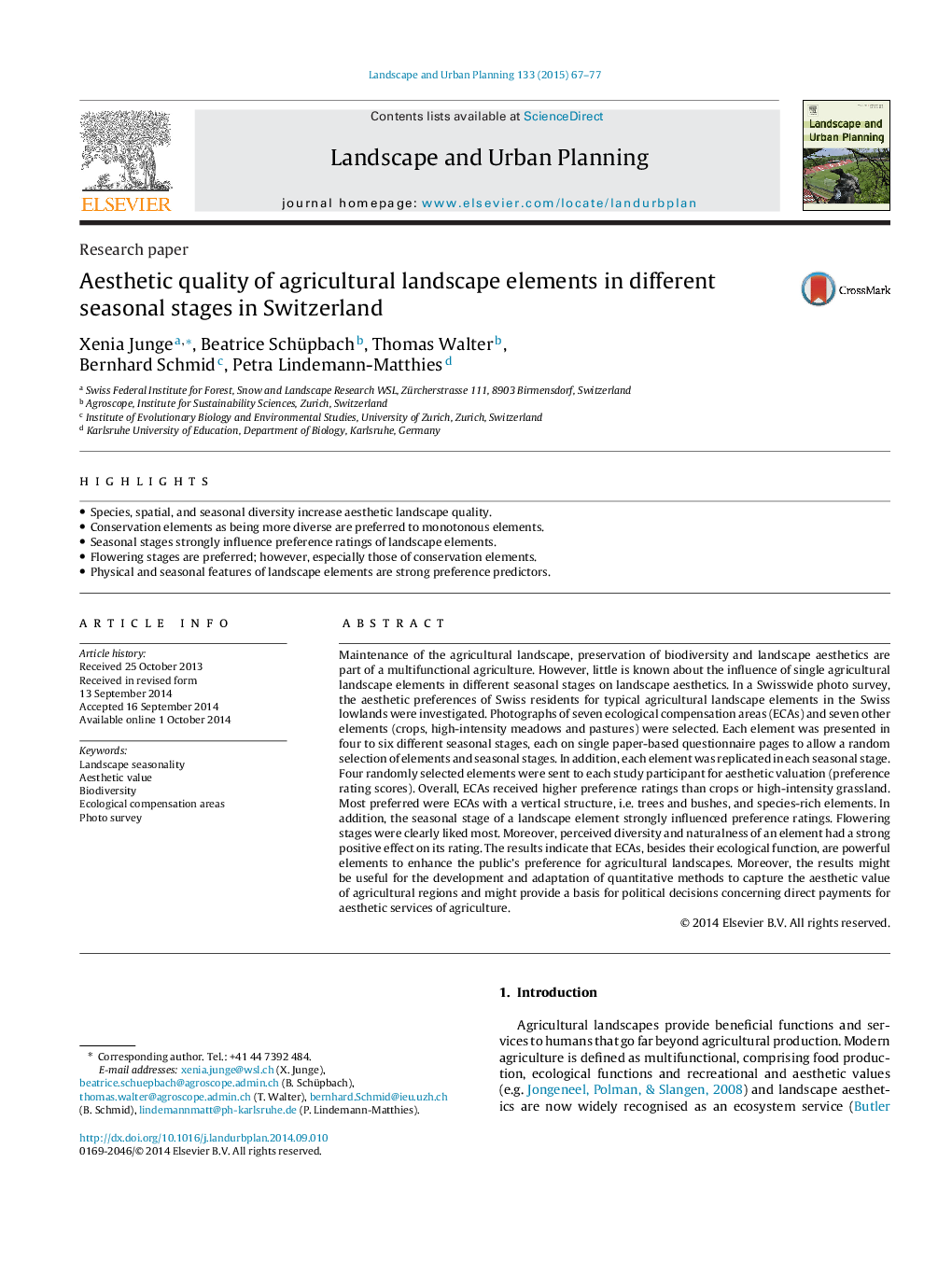| Article ID | Journal | Published Year | Pages | File Type |
|---|---|---|---|---|
| 1049201 | Landscape and Urban Planning | 2015 | 11 Pages |
•Species, spatial, and seasonal diversity increase aesthetic landscape quality.•Conservation elements as being more diverse are preferred to monotonous elements.•Seasonal stages strongly influence preference ratings of landscape elements.•Flowering stages are preferred; however, especially those of conservation elements.•Physical and seasonal features of landscape elements are strong preference predictors.
Maintenance of the agricultural landscape, preservation of biodiversity and landscape aesthetics are part of a multifunctional agriculture. However, little is known about the influence of single agricultural landscape elements in different seasonal stages on landscape aesthetics. In a Swisswide photo survey, the aesthetic preferences of Swiss residents for typical agricultural landscape elements in the Swiss lowlands were investigated. Photographs of seven ecological compensation areas (ECAs) and seven other elements (crops, high-intensity meadows and pastures) were selected. Each element was presented in four to six different seasonal stages, each on single paper-based questionnaire pages to allow a random selection of elements and seasonal stages. In addition, each element was replicated in each seasonal stage. Four randomly selected elements were sent to each study participant for aesthetic valuation (preference rating scores). Overall, ECAs received higher preference ratings than crops or high-intensity grassland. Most preferred were ECAs with a vertical structure, i.e. trees and bushes, and species-rich elements. In addition, the seasonal stage of a landscape element strongly influenced preference ratings. Flowering stages were clearly liked most. Moreover, perceived diversity and naturalness of an element had a strong positive effect on its rating. The results indicate that ECAs, besides their ecological function, are powerful elements to enhance the public's preference for agricultural landscapes. Moreover, the results might be useful for the development and adaptation of quantitative methods to capture the aesthetic value of agricultural regions and might provide a basis for political decisions concerning direct payments for aesthetic services of agriculture.
